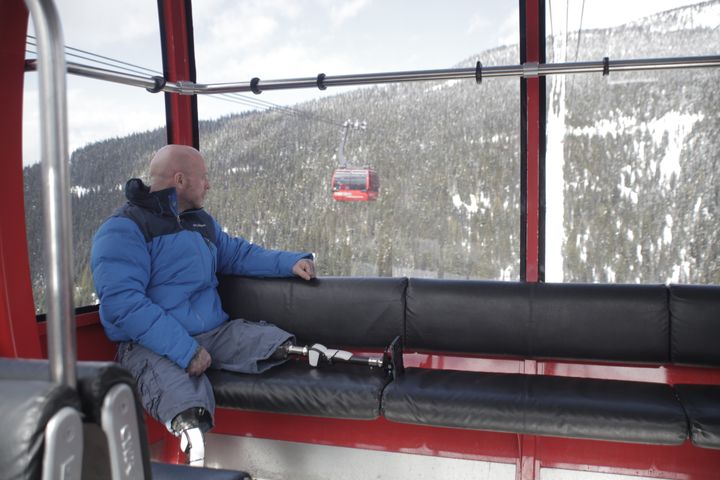The advertisement of the upcoming Winter Olympics and Paralympics in Pyeongchang next month, has shown the evident lack of involvement of disabled athletes in the winter games. The Winter Olympics is set to host around fifteen winter sports; the Paralympics in comparison, around six. This is due to the fact that winter sports such as the Skeleton, are deemed unsuitable, or too dangerous for those with a physical impairment. Micky Yule – Paralympic powerlifting champion and double amputee, is all too familiar with this view. He feels that Paralympians are treated differently to Olympians: second class citizens, boxed off into a ‘disabled’ box. It’s evident that many people still view the Paralympics as lacking the competitive validity of the Olympics. In response to this lingering view within society, Yule challenged himself to become the first double-amputee to take on the Skeleton, and the first double-amputee to compete against the reigning world champion, Martins Dukurs. He documented his journey, to the world’s fastest slide in Canada, along with two supportive friends, in the film ‘Slider’.
We often hear when growing up that it is the taking part that counts, and this is echoed by founder of the Olympic Games – Pierre de Coubertin, who believed that ‘the important thing in life, is not to triumph, but to compete’. De Coubertin was a firm believer of diversity in sport, and sport as a practise for all – so why in 2018, do we still find limitations in what is deemed suitable for disabled athletes? Why is there still segregation of the Olympics and the Paralympics? Of course, in sports like the Skeleton, there are numerous barriers to be overcome for somebody with a disability to take part. But, who is better prepared to break down these barriers than somebody who already overcomes the daily challenges that having a disability can present?

The advancement in modern technology has allowed disabled athletes like Oscar Pistorius, to participate in both the Olympics and Paralympics, due to his carbon-fibre prosthetic racing legs. It has been claimed by many, that the use of such technology in the sporting world provides disabled athletes with an unfair advantage. Some have said that technology does not belong within the confines of athletic competition, if it gives them an edge. In Micky Yule’s Skeleton challenge, innovative technology was welcomed to get Micky sliding with a fair chance. His competitor, Martins Dukurs has legs, and Micky does not – which quite simply means that technology was needed in order to make it a fair race. Technology makes sport accessible for all, and allowing disabled athletes to compete against able-bodied athletes, portrays that having a disability does not have to limit nor restrain you. Portraying this within the media, will help to inspire and instil confidence in anybody who feels like they have lost their life to a disability.
“Being an athlete isn’t about having the perfect body, or the perfect number of limbs, it’s about the Olympic spirit – giving everything you’ve got and never giving up.”
I believe that the way we perceive illness and disability needs to change, and Slider portrays a message that we should all share – disabled, or able-bodied, if you put your mind to it, you can achieve anything.
